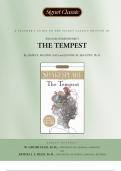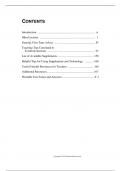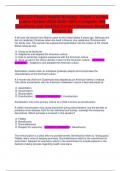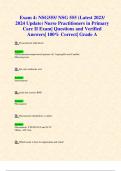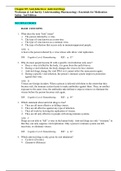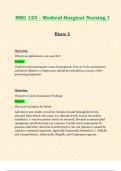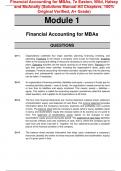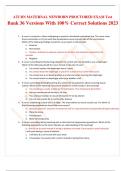Exam (elaborations)
A TEACHER’S GUIDE TO THE SIGNET CLASSIC EDITION OF WILLIAM SHAKESPEARE’S THE TEMPEST By JAMES E. McGINN, Ed.D and JEANNE M. McGLINN, Ph.D.
A TEACHER’S GUIDE TO THE SIGNET CLASSIC EDITION OF WILLIAM SHAKESPEARE’S THE TEMPEST By JAMES E. McGINN, Ed.D and JEANNE M. McGLINN, Ph.D.
[Show more]
